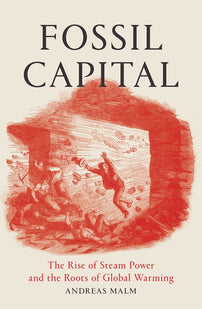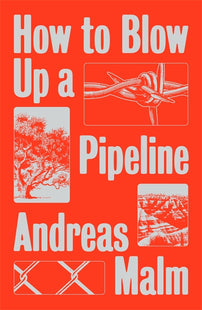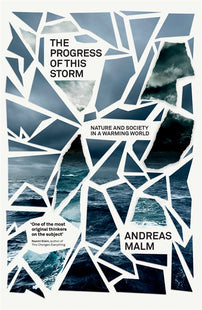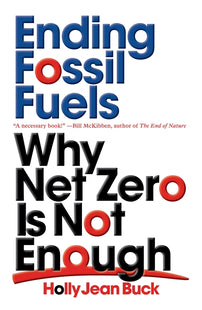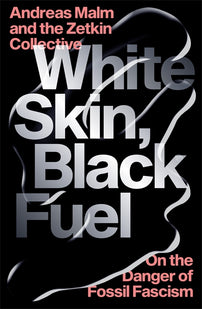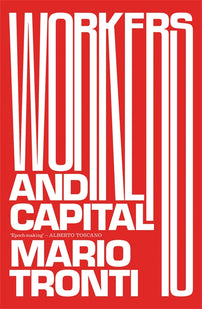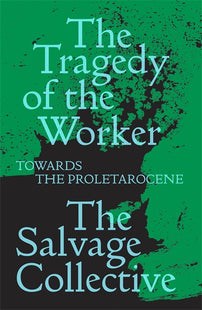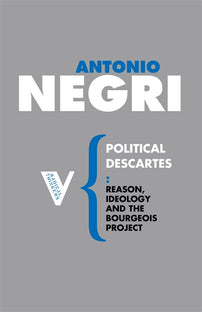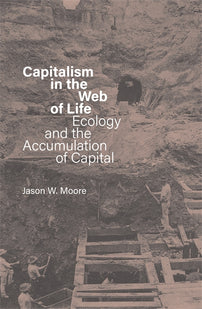Welcome to the Past. Autonomy of Nature, Fossil Fuels and the Capitalocene
Reading Malm thorugh the prism of Workerism, Davide Gallo Lassere discusses the historic relation between fossil fuels, labour power and global warming.

Contrary to some very sophisticated theoretical elaborations, according to Andreas Malm, global warming and Covid-19 are two textbook cases of nature's autonomy. Although the two phenomena have strong common features, they are of different orders and any hasty comparison risks appearing fallacious - it would be, says Malm, like confronting a war with a projectile. The former is a process rooted in the distant past, while the latter is an event with a shorter history. Climate change produces effects that are expected to persist 'forever and ever', while global circulations of (corona)viruses and epidemic or pandemic outbreaks in the coming decades remain unpredictable.
Moreover, while the spread of SARS-CoV-2 can be seen as a singular, albeit particularly dramatic, consequence of ongoing climate change, the impact of the pandemic on a reduction of CO2 emissions has been relatively small. Nevertheless, for Malm, both phenomena reveal an adamant ontological fact: nature and society are never entirely intertwined; the latter's hold on the former is never total. Not only can we always, from an analytical point of view, distinguish between the two. But, from a practical point of view, we must do so. Every politics has an epistemology; every epistemology is a kind of politics. And Malm's position is based on a critique of post-dualist ontologies.
In order to oppose the violent processes that are responsible for global warming and that give way to calamitous scenarios, it is necessary to understand what society does and has done to nature and what nature does and has done to society. Human societies in general and capitalist societies in particular do not produce nature, they disrupt it; they do not manufacture it, but transmute it, shape it, destabilise it. The ideological-cultural construction of nature does not detract from the immanent constraint of its own laws, its very autonomy: "human societies have transformed planetary carbon cycles, but not the carbon atoms themselves" - says Malm, quoting his colleague Alf Hornborg. This is a fact, not an interpretation - we might add. Sociogenesis is therefore not a demiurgy. It is ''a moving unity-of-contrasts, a dynamic combination, a process in which social and natural components tumble over each other'', to the extent that ''the deeper the intrusion of society into nature, the more nature invades society, with its spectral army whose first incursions can already be felt'' (Malm, 2017b: 64, 58). And of course: this is even more transparent in 2020 than it was in 2017, when these lines on "the paradox of historicised nature" were written.
Beyond certain stereotypes of constructivist, hybridist and neo-materialist positions[1] , what Malm wants to bring to the fore is not only the historical anteriority and necessary exteriority of nature to society, but also its ontological primacy. Without nature, there is no society, of course. But also, and especially from an anti-capitalist point of view, the defence of nature involves, among other things, a politics of separation. Since capital cannot reproduce itself without relying on negative externalities, it is necessary first of all to dissociate its footprint from the material substratum on which it weighs - the massive emission of CO2, from the earth's atmosphere; the dumping of toxic substances, from ecosystems, etc. And then we must recognise the inescapable role of natural positive externalities - the free or (very) low-cost appropriation of food, energy, mineral resources, etc. In this respect, the dark history of the exploitation of natural wealth runs parallel to that of the exploitation of labour power (Patel, Moore, 2018). Both are co-determined and in both cases the assimilation into capitalist circuits is done at the expense of the respective autonomy of workers and nature: "capital is a command imposed on a separation".[2] This ontological-political remark of Toni Negri, taken up by Malm (2018a: 200), provides the basis for the following pages of this paper, where I will reconstruct the historico-naturalist[3] coordinates within which the unequal and combined tragedy of our time unfolds.
[book-strip index="1" style="display"]Class struggle and the previous accumulation of fossil capital
Global warming as the result of antagonisms between human groups, fans the flames of social, economic and political tensions. This is the basic thesis of Malm's historiographical work, his diagnosis of the present and the prospects of future breakdown that it leads to. Temperature change on Earth - determined in the first instance by the capitalist use of these fossil fuels "condensed of unequal social relations" (Malm, 2017a: 45) - is an impure product of past and present social conflicts. Whether one assumes a global perspective or focuses on (pre-)Victorian England, it does not matter: class struggle is central. All over the world, the adoption of fossil fuels as the primary engine of capital accumulation was imposed by force in reaction to the workers' rejection of labour.[4] Indeed, while human beings have long known about the pyrolytic properties of coal and have burned it to heat homes since pre-modern times, it was not until the 1825-30s that its production and consumption soared far beyond previous habits. But what happened then? Why did a change of such magnitude take place at the same time as the first laws to defend workers? How did this epochal change extend beyond England to the four corners of the world? It seems to us that Malm's tale of the previous accumulation of fossil capital is not only able to account for this passage from one historical phase to another, but also to produce subjectivizing effects similar to those described by Marx and Black and Feminist Marxist narratives of the matter. And once again, the connection to the Workerist reading of social transformation seems fruitful, as Malm's approach implicitly takes up the classic Workerist dialectic of struggles/crisis/development which makes technological innovation the pivot of the capitalist response to workers' ungovernability.
Since I cannot reproduce the epistemological, historiographical and political richness of these debates here, I will limit ourselves to pointing out that from the very first Workerist writings, the capitalist use of machines is put under the spotlight as a crystallisation of factory despotism. Following Marx's teaching, Raniero Panzieri and Romano Alquati criticise the alleged neutrality of science and technology and thus reveal the political stakes inherent in the production process. According to Quaderni rossi and classe operaia, the processes of restructuring production do not embody the evolutionary progress of a super partes rationality, but they aim to counteract the workers' behaviour of resistance, to regiment the labour force and to subject it to the new norms of profit maximisation. Mario Tronti widens this visual angle, denouncing the iron logic which forges the overall reconfiguration of the factory and of society: it is then the rationalisation of public administration or the reform of education, health and urban planning, as well as the money management or the steering of investments, which reinforce the plan of capital, following the difficulties which emerged from 1929. What Negri and Sergio Bologna continually underline in the post-'68 period is that the capitalist command thus further integrates the working class into the reach of its power, but it also opens the doors to larger crises.[5] Following Negri, if Keynes represents the bourgeois response to Lenin, then the neoliberal imperial turn gives substance to the capitalist reaction to the workers' threats of the 1960s-70s. Similarly, for Bologna, the precarization of employment, the financialization of the economy and the expansion of logistics constitute the spearhead of a counter-revolution from above in the face of the political destabilisation provoked by the social movements of the time.[6]
Now, the "Copernican revolution" which consists in considering the subject of social struggles as a priority over the objective development of capital, is at the heart of the original transition to fossil fuels as described by Malm. Yet this necessitates the introduction, however, of a fundamental element that puts "Workerist socio-centrism" into perspective (Leonardi, 2019a and 2019b), namely: the energy question. According to the Workerists, capital always responds to workers' conflictuality by innovating the social relations of production and power. But Italian theorists remain fundamentally blind to the environmental composition and ecological relapses of the bosses' reactions. This omission of Workerism, however, is central to Malm's and is a necessary complement to any anti-capitalist critique. Indeed, the sequences of struggle/crisis/development do not only shake up, according to the Workerist lesson, the social, economic and political relations of a given period, but they also affect the environmental and ecosystemic balances, bringing about vast ecological mutations. As will be seen more clearly in the following article on the pandemic, the theoretical and political framework is enriched along these lines. Beyond the subjective limit of capital imposed by the autonomy of worker (and decolonial) struggles, we must also consider the objective limit imposed by nature and its autonomy: if the first is an internal limit to capital (the famous "within and against" thematised and practised by Workerism), the second is an external limit to capital (as has been emphasised, among others, by the eco-Marxist James O'Connor). The two limits, however, pose very different problems for the ruling classes, who are increasingly forced to resort to containment measures that suggest very bleak scenarios.
To summarise Malm's point, then, we could say that the replacement of water by coal as the main source of energy in production has been a class project from the outset, the repercussions of which are - and will be - increasingly felt. If, indeed, ''global warming is a result of actions in the past'', that is, if ''we can never be in the heat of the moment, [but] only in the heat of this ongoing past'', then ''an eternity is determined now'' (Malm, 2018a: 5, 7). We are in fact in the midst of a period of acute crisis, and it is through the prism of this temporal injunction that Malm elaborates his theoretical and political path: for the subaltern classes in particular and for the safeguarding of many animal and plant species, it is increasingly urgent to extinguish the fire that is burning the planet as quickly as possible, otherwise the conditions of survival of many living beings are at grave risk. Hence the importance of combating fossil capital as the primary cause of current and future catastrophes. But what exactly is fossil capital? How did it become so central to the general economy of capitalist societies? And, more generally, what do we mean by the fossil economy?
According to Malm, the fossil economy, characterised by soaring carbon dioxide emissions, refers to ''an expansion in the scale of material production achieved through an expansion in the burning of coal, oil and/or gas'' (Malm, 2017a: 67). Unlike the Ricardian-Malthusian paradigm, however, it was not competitive or demographic pressures, land restrictions or the exhaustion of alternative sources that led some capitalists to endorse this strategic choice, but eminently political reasons; reasons, therefore, that have to do with conflict and class struggle, rather than the dry calculations of mere economic reason. The steam engine prevailed over the water wheel not because it was more efficient and reliable or because coal was cheaper and more abundant than water. It is not an energy crisis that is at the root of this transition, which is so decisive for the fate of the world today and tomorrow, but a real crisis of control over labour power. Before and throughout the transition, the technological superiority of the machine and the economic profitability of the resource are rather counter-arguments: wheels were more powerful and less subject to repair and water flowed freely and copiously in the English countryside (Malm, 2017a: 81-91). However, they had one major drawback: the distance from the large worker concentrations that were so necessary for the transition to a higher phase of the capital accumulation process. Water power gave a centrifugal dynamic to the spatial development of the first industrial revolution, by moving factories away from urban centres. This always gave rise to important managerial problems concerning the supply and management of labour, until the rise of the working class promoted the shift.
Since the beginning of the century, the specialised press had been whispering advice to the captains of industry: the advantage of steam power was its ability to approach the labour force, the most precious commodity for capital - the only one without which its very existence would be unimaginable. It was necessary to place factories in the heart of a population trained by the sweat of the brow in order to guarantee access to a workforce that could be exploited at will and to free "capital from its spatial chains" (Malm, 2017a: 94). In the factory colonies, the manufacturer had to erect the building, equip the machinery, construct the housing, guarantee a minimum of reproductive services, in short: to found the village ex novo, without the slightest financial and logistical support from the public authorities. On top of this, recruiting the labour force was a major challenge: "the idea of working on machines for long days, with regular hours, under one roof and under the strict manager supervision was repugnant to most, especially in rural areas".
As is so often the case, then, it was the "implacable aversion to factory discipline" (Malm, 2017a: 97) that caused the most concern, forcing capitalists to launch advertising campaigns to import workers from the city. Despite the exorbitant expenditure of constant capital, the costs of reproduction, the shortage of labour and the assiduous practice of refusing work, this situation was sustainable until around 1825-30. When strikes, sabotage and riots became more severe, however, the factory colonies proved to be far too vulnerable. So much so that, once the 10-hour-day law was approved, the extremely ferocious attacks on workers and unions were no longer enough to maintain the rate of profit and the only viable option was a real reversal of investment strategy. The hydraulic capitalists were then increasingly forced to convert to steam and to change the geographies of capital, setting in motion a centripetal dynamic. Or, to put it another way, ''the foundation of the industrial city [was] fossil'' (Malm, 2017a: 104). Here we find again the dialectic of struggle/crisis/development, but within a socio-economic framework, which unlike that drawn up by classical Workerism, does not ignore the environmental history of capital and class struggle. And this framework, of course, also applies to other times and contexts.
[book-strip index="2" style="display"]From one transition to another
Once coal was included in the circuit of valorization, capital was able to regain the initiative and more easily exploit the reserve armies that were piling up in the large English cities. A more obedient and numerous social composition was thus made available by the intrinsic characteristics of the energy resource. Plucked from the bowels of the earth, coal could be moved, stored and consumed where it was most convenient, i.e. where the blackmail of capital on labour was best executed: ''for the first time in history, the converter and the source of mechanical energy - the machine and the mine - were spatially dissociated'' (Malm, 2017a: 104).
This did cotton capitalists a great service. Without the energy base of coal, the margins for disposing of workforce ad libitum would have been narrower. Fossil fuel thus provided a decisive material condition for resolving the political contradictions that ran through capitalist society at the time. Before the energy transition, the mechanisation and automation of production could certainly substitute for the most recalcitrant workers, but they continued to be fed by sources that were not entirely tamed by capital. Wind, for example, remains by definition random. Water, even if it can be dammed and channelled, is linked to seasonal fluctuations and to territories that are not necessarily congenial. Conversely, the coal rush was driven precisely by what Malm calls ''its powerlessness, or power without power'' (Malm, 2017a: 112). Completely controllable by its owner, ontologically subservient to the capitalist, coal is a variable fully dependent on the demands of accumulation and thus embodies to perfection the fantasy of every owner of money and means of production: coal is "a driving force over which capital can exercise absolute power while at the same time providing capital with all the power it needs" (Malm, 2017a: 114).
The virtues of coal, "perfectly docile, malleable and flexible" (Malm, 2017a: 113), represent the negation par excellence of the deficiencies of other driving forces as well as the vices of labour power - what the Workerists called "labour rigidity", or labour as an "independent variable" of capital. Thus, from the 1830s onwards, the steam engine increasingly supplanted the water wheel and coal mining made a remarkable leap forward. To a variety of ends, workers' self-defence forced capital to set in motion this great energy transformation, which had a formidable influence on the production of a properly capitalist temporality and spatiality. The victory in the struggle over the working day thus ended up maintaining the predominance of the abstract space-time of capital over the absolute space and concrete time typical of pre- or proto-capitalist social formations.[7] Indeed, unlike renewable energies, fossil fuels do not depend on the morphological qualities of a site or the chance of the seasons. On the contrary, their total manageability reduces time and space to purely quantitative and functional data. From this point of view, fossil fuels are to energy what money is to exchange: by being available/valid anytime and anywhere, they open up the field of capitalist possibilities; they allow capital to disregard certain limits related to the particular properties of the objects they mediate between; and both accelerate and intensify the rhythms of production. With coal, capital definitively frees itself from several natural chains and obtains a greater freedom of movement and better output efficiency.
The general formula of capital then needs to be transcribed in terms that are not only ecological but also energetic. What characterises all capitalist societies is indeed the imperative of indefinite growth. Beyond their historical singularities, all capitalist societies constantly tend to go beyond their borders, to infinitely enlarge the circuit of the reproduction of their social relations. This implies the perpetual expansion of the reign of the commodity in order to make ever more money: M-C-M', money-commodity-money prime. However, the accumulation of capital through the commodification of the world manifests several ways: ever greater masses of individuals who join the workforce and are subjected to the command of money, the development of the means of production, but also the uninterrupted subsumption of new social and geographical territories under the law of profit and the continual swallowing of new natural resources - energy and food in primis - by capital. Yet, as Workerism has repeatedly emphasised, the exploitation of labour power is the vital element of this potentially unlimited process, devoid of specific meaning and content, while the colonisation of social space and the imperialist annexation of continents constitute its weaponized arms (the latter however not duly underlined by Workerists.) Within this analytical framework, the originality of Malm's eco-Marxism consists in its focus on the ever-increasing assimilation of fossil fuels to sustain capitalist deployment. The C of the general formula of capital M-C-M' then emerges from the triangulation between 1. the accumulation of the means of production, 2. the exploitation of living labour and 3. the incorporation into the relations of production of ever larger chunks of extra-human nature, of which fossil fuels capture the author's attention.
In a brilliant article, Malm adopts this approach from a long-term perspective. This allows for an understanding of the contemporary situation, where the recent explosion of CO2 emissions on a global level can be linked to the crisis in the governance of labour power during the 1960-70s. Drawing on Ernest Mandel's reading of Nikolaj Kondratiev's studies on business cycles, Malm shows the fundamental plasticity that capitalism has assumed in recent centuries. The logic of the general formula of capital has indeed materialised in a multiplicity of heterogeneous social formations, but at each phase of transition we have seen the same tendency at work. As the Workerists teach us, each time a structural crisis is in full swing we witness a technological revolution capable of dissolving the economic and political impasses that threaten the long march of capital. And each time, this upheaval in the relations of production initiated by the introduction of new machines, proceeds concomitantly not only with a reorganisation of the labour process (necessary to counteract workers' indiscipline), but also with a radical mutation of the energy system. The entire energy-producing technological constellation, the leading sectors of the economy and the underlying logistical infrastructure were thus transformed from the ground up. Without going into historical and analytical detail, the sequence of different cycles - each characterised by an ascending and a descending phase - gave rise to the following transitions: a first wave from 1780 to 1848 driven by the hydraulic mechanisation of the cotton and iron industries; a second wave from 1848 to 1896 driven by the steam mechanisation of industry (cotton, iron, coal, machine tools) and transport (rail); a third cycle from 1896 to 1945 driven by the electrification of industry, transport and households with electrical equipment, engineering, chemicals and steel at the centre; a fourth cycle from 1945 to 1992 promoted by the motorisation of transport (cars, planes) and several branches of the economy (refineries, petrochemicals, oil, gas); and a final wave from 1992 to the present day, propelled by the digitalisation of the economy and the productive centrality of computers, software, telecommunications equipment, microprocessors, etc. Malm, 2018b).
Differently from the partiality of the Workerist perspective[8], according to Mandel, phase transitions are triggered both by elements endogenous to the economic circuit and by exogenous factors, of a social and political nature. It is the combination of this plurality of phenomena of immanent and (partially) transcending capital that initiates the change of historical conjuncture and incites the recursive enlargement of the energetic base on which the system is based. With regards to the transition from the fourth to the fifth cycle - with the beginning of the descending phase of the fourth between the end of the 1960s and the beginning of the 1970s - the subjective component of the class struggle prevailed over the objective contradictions immanent to capital (intensification of competition, exhaustion of markets, etc.). Beyond the nuances in the periodisation of capitalist accumulation, this observation, a trademark of Workerism, provides a clue to deciphering an apparent anomaly in Mandel's model, assumed by Malm. Indeed, "unlike steam engines, electricity, automobiles or oil, computers are neither engines, nor transmitters, nor sources of energy, and yet the wave they carried caused the most extreme explosion of CO2 in the history of industrialised capital" (Malm, 2018b).
The thesis of both Malm and the Workerists is that the new information and communication technologies (NICTs), even if not immediately linked to the extraction and circulation of fossil fuels, have played an inescapable role in recuperating the social movements that undermined the old socio-energetic regime and that they exercise a constitutive power within the current cycle. Once again, the struggles that brought about the crisis of the old regime of accumulation are linked by a double knot to the development of the new techno-energetic system. The ongoing degeneration of atmospheric equilibria is indeed directly proportional to the boom in the relocation of Western factories to Southeast Asia; and this reconfiguration of global commodity chains, one of whose primary objectives has been the dissolution of the working-class concentrations of the Keynesian and Fordist era, would never have been practicable without the work of connection and coordination made possible by NICTs.
[book-strip index="3" style="display"]The warming condition: the Capitalocene seen from China
In order to decipher the recent qualitative leap in global warming it is imperative to detect the alchemy between labour conflicts in the West in the 1960s-70s, the consequent deepening of trends towards the globalisation of capital from the 1980s-90s onwards, and the astronomical rise of China at the turn of the century: struggles/crisis/development, with special attention to the energy spiral that derives from this, with the growth of total capital in absolute terms (so-called global GDP) going hand in hand with the increased burning of coal, gas, and oil. Even if the analysis of such a dynamic goes far beyond the limited scope of this text, the question arises: why China in particular, and not other countries? What conditions did it fulfil to attract so much capital throughout its rise? Once the burden of living work became unbearable in the West, China appeared for several reasons to be a good place to receive formidable flows of foreign direct investments. To put it in simple terms, firstly, it has a huge, relatively disciplined and educated working class, under pressure from the peasant masses in the interior. Secondly, China has a fairly stable political system, governed under the centralising aegis of the communist party. Thirdly, it has developed a solid and ramified logistical and metropolitan network that has proved particularly suitable for the movement of goods: ports, airports, highways, rails, etc. But also, the Asian giant has fossil deposits and a consequent and advanced energy infrastructure. This is how China has become the main chimney of the global factory. The figures in this regard are staggering. On the one hand, China's GDP increased more than fortyfold between 1990 and 2019, making Beijing the second largest global economic power after Washington, while its growth rates continue to be much more sustained than those of its Western competitors. On the other hand, the consumption of fossil fuels (basically coal) has literally exploded, making China not only the world's largest extractor of fossil fuels, but also the largest emitter in absolute terms of CO2, which is responsible for more than 50% of recent changes in air composition (Malm, 2016).
Yet these well-known figures need to be scrutinised. Schematically: since China has attracted the desires of transnational big business, nationalism as methodology does not offer a good lens through which to examine climate issues. The China-system cannot be held up as the main arsonist in the fire that is setting the planet ablaze. On the contrary, it is the complex tangle of global social relations behind the data that needs to be decoded and criticised. Locating emissions within the bounds of national territories says nothing about the tightly woven web that links the production of a good or service in one corner of the world to its transport and consumption in any other. China's ''pillar of smoke'' (Malm, 2016) is indeed directly dependent on its massive exports, which until 2008 - and still today, albeit less intensely - were the driving force behind the China’s explosive growth. Following Malm, it is rather sectors of production destined for the global market that have caused CO2 emissions to soar, while other statistics (demographic changes, improved living standards) count for less.[9] From this point of view, the ''ecological burden'' (Malm, 2016) of rich countries and the lifestyles of their affluent classes takes on a different significance. In this sense, the deterioration of atmospheric conditions caused by factories in China is the polluted side of the coin of the tertiarisation of the economy in the global North. This confirms, in an unprecedented way, and to enormous proportions the phenomenon that constitutes the recurrent theme of Malm's political historiography: if capital flees from expensive labour and conflict, ''where capital goes, gas emissions immediately follow'', determining a variation in the fossil composition of capital (Malm, 2016).
This analytical narrative inexorably disqualifies the myth of the Anthropocene (Malm, 2015).[10] According to Malm, the Anthropocene theories actually blame humanity as a species: humans, as an undifferentiated entity, are guilty of the disastrous evolution of climate change. It is a narrative that de-naturalizes in order to re-naturalize: the origin of global warming is not climatic evolutions immanent to the laws of nature, but human nature. The discovery of fire, innate productivism or any other ahistorical and universal quality that is supposed to designate the generic being do not do the trick, however, because they too often lead to an abstract image of human action responsible for the degradation of nature.
"Indeed, it was only a small coterie of white British men who literally pointed steam as a weapon - on sea and land, on ships and on rails - against almost all of humanity, from the Niger Delta to the Yangtze River, from the Levant to Latin America. [...] The capitalists of a small part of the Western world have invested in this technology, laying the foundation stone of the fossil economy: and at no time has the species voted for it, with its feet or at the ballot box, nor marched in unison, nor exercised any kind of common authority over its destiny and that of the earth system" (Malm, 2017a: 10).
Global warming is not the rotten fruit of Anthropos but of a specific social formation. Business-as-usual, i.e. the increasing burning of fossil fuels, can only appear natural to an ideologised eye. To counteract a wait-and-see attitude or else a pervading defeatism, we must then bring history to the climate issue and question the social forces that have ignited this fire – a fire which is by no means inevitable - and why they have done so. Any critical historiography must show the contingent character of this process, the alternatives that have been crushed along the way, but above all where the responsibility lies in the past and which vested interests are at stake in the present that oppose the concrete possibilities of ecological transition (Malm, 2017a: 20-27). A few basic facts are worth mentioning in order to free ourselves from the teleological narrative of the Anthropocene and to bring out the historical-political violence that fanned the flames. At the beginning of the 21st century, the countries of the Global North accounted for less than 20% of the world's population, even though they had emitted more than 70% of CO2 into the atmosphere since 1850; the poorest 45% of humanity accounted for 7% of emissions, while the richest 7% accounted for more than 50%; beyond the class distinctions within each country, an average American has a carbon footprint 500 times greater than a person in sub-Saharan Africa (although it is well known that conspicuous and luxury consumption is extremely polluting); 65% of total emissions to date are attributable to 90 fossil fuel extraction companies, etc. In short: depending on time, place and social extraction, the carbon footprint of a specimen of Homo sapiens sapiens can vary from 1 to well over (1000 Malm, 2017a: 11-13; Malm, 2016). The human race thus appears to be an abstraction that is too blurred and indeterminate to detect the real culprits. And this theoretical mystification obviously implies political paralysis. Taking up one of the fundamental lessons of Workerism, directly inspired by the Lukácsian reading of Lenin to which we will return in the next article, it is the partiality of the point of view of subjects engaged in struggle that provides us with the compass to orient ourselves in the jungle of history. For it is only from a partial epistemological perspective that we can gain access to an understanding of capitalist social relations and attempt to foster their radical transformation.[11]
[book-strip index="4" style="display"]Final considerations
Wherever it has taken hold, the iron heel of fossil capital has spilled tears and blood. But wherever it has gone, it has met fierce resistance. From Alaska to Borneo, from Ecuador to Nigeria, from the Middle East to India, there is no place on the planet where the refusal of the exploited of the Earth to submit to its dictates has not been clearly asserted. The antagonism of workers and miners in the mines or the conflicts of indigenous and colonised peoples in their territories are configured as imperishable monuments in the memory of struggles. From now on, however, the nemesis of fossil capital will not only be perpetrated by the autonomy of the workers and the colonised, but also by that of nature. On the cyclical temporality of classical capitalist crises, is thus increasingly grafted the cumulative temporality of global warming. Or, to put it in other words, onto the processual tendency of the class struggle is tacked the exponential tendency of ecological catastrophes. And if until now the reformism of capital has always been able to thwart struggles and crises by constantly renewing the grammar of development, to hope to contain/control not only the autonomy of the dominated but also that (without intentions) of nature, it will have to show an even greater reactivity and inventiveness. Except that, after twelve years of systemic crisis and with no way out on the horizon, it seems to be dangerously lacking in these two qualities. What's more, the Covid-19 global pandemic, the economic depression it is ushering in, and the crisis of governance at work today will only make matters worse. On the other side of the barricade, on the other hand, climate justice movements and popular uprisings have had a decidedly bubbly season in 2019, while still falling far short of the urgency of the moment. We could therefore conclude this first text by quoting John Maynard Keynes from A Tract on Monetary Reform, who, shortly after the signing of the Treaty of Versailles, criticised economists for refusing to intervene in the conjuncture. ''In the long run", he wrote, "we are all dead. Economists set themselves too easy, too useless a task if, in the tempestuous season, they can only tell us that when the storm is long past the ocean is flat again''. Those who are feeling the full impact of the Capitalocene, however, know only too well that until it is stopped by their bodies, the ongoing storm will not stop progressing forward.
Bibliography
- I. Angus, Facing the Anthropocene, Monthly Review Press, 2016;
- N. Balestrini, P. Moroni, The Golden Horde, Seagull Books, 2021;
- J. N. Bergamo, Marxismo ed ecologia, Ombre corte, 2022;
- D. Chakrabarty, The Climate of History in a Planetary Age, Chiacago University Press, 2021;
- J. Farjat, F. Monferrand, Dictionnaire Marx, Ellipse, 2020;
- P. Guillibert, Terre et capital, Amsterdam 2021;
- E. Leonardi, ''Italian Theory and World Ecology'', in Sociologia urbana e rurale, n°120/2019a, pp. 93-108;
- Id., ''Bringing Class Analysis Back In'', in Ecological Economics, n° 156/2019b, pp. 83-90;
- G. Lukacs, History and Class Consciousness, MIT Press, 1972;
- A. Malm, https://www.jacobinmag.com/2015/03/anthropocene-capitalism-climate-change/, 2015;
- Id., http://revueperiode.net/capital-fossile-vers-une-autre-histoire-du-changement-climatique/, 2016.
- Id., L’anthropocène contre l’histoire, La fabrique, 2017a;
- Id., Nature et société : un ancien dualisme pour une situation nouvelle, in P. Guillibert, S. Haber (sous la direction de), Actuel Marx, n° 61/2017b;
- Id., The Progresso of this Storm, Verso, 2018a;
- Id., https://www.mediationsjournal.org/articles/long-waves, 2018b;
- P. Missiroli, Teoria critica dell'antropocene, Mimesis, 2022;
- T. Mitchell, Carbon Democracy, Verso, 2013;
- F. Monferrand, La nature du capital, Amsterdam, 2022;
- J. W. Moore, Capitalism in the Web of Life, Verso, 2015;
- Id., https://jasonwmoore.com/;
- A. Negri, Marx beyond Marx, Autonomedia/Pluto, 1991;
- Id., Books for Burning, Verso, 2005;
- R. Patel, J. W. Moore, A History of the World in Seven Cheap Things, Schwartz Publishing, 2018;
- M. Tronti, Workers and capital, Verso, 2019
- S. Wright, Storming Heaven, Pluto Press, 2002.
[1] For an eminently political intervention in these epistemological-ontological debates inspired by the climate emergency, see Malm (2018a: 21-118). Malm's statement, which in this book does not always do justice to the authors and theories he discusses, is developed along the lines of the following quote: "Less of Latour, more of Lenin: that is what the warming condition calls for" (2018a: 118).
[2] On the dialectic of separation, see Negri (1991 and 2005). With the dialectic of separation Negri understands not only the autonomy of labour in relation to the development of capital, and thus the necessity for the latter to embrace it, but the work of rupture and secession of the former in relation to the latter. The autonomy of nature in relation to capital is however very different from that of labour, and its effects do prove not to be emancipatory, but simply catastrophic. Taking the possibility of catastrophe into account politically implies taking this original separation between nature and capital into the highest consideration and working to establish ecologically sustainable relations.
[3] For the concept of historical naturalism see Guillibert (2021) and Monferrand (2022). See also the entries ''Nature'' and ''Naturalism', in Farjat, Monferrand (2020: 157-62).
[4] The primacy of class struggle in the dynamics of social transformation and the centrality of the practice of the refusal of work constitute the very DNA of Workerism. This approach seems to us to be the common thread in Malm's historiography, and it has also been brilliantly illustrated by Timothy Mitchell (2013), showing how the transition to oil was undertaken by Churchill to counter the power of the coal miners.
[5] As we see today with nature, after all...
[6] For a general introduction to Workerism in English, see Wright (2002). Of great use are the recent translations of The Golden Horde (Balestrini, Moroni, 2021) and Workers and Capital (Tronti, 2019). The publisher Brill is planning to publish several anthologies on the writings of some of the most significant figures of Workerism, in the coming years, for the most part still relatively unknown in the English-speaking world, such as Panzieri, Alquati, Bologna, or Ferrari Bravo.
[7] It is at this point that what Marxists call the transition from the extraction of absolute surplus value to the extraction of relative surplus took place. Once the duration of the working day was limited, the wheels could no longer compete with steam engines, which could be accelerated at will by intensifying the rhythms of labour. On the creation of a properly capitalist spatio-temporality, see Malm (2017a: 131-34). On the abstraction of nature in the transition from feudalism to capitalism, see also J. W. Moore (2015) or his three online studies on the Capitalocene, freely available on his website https://jasonwmoore.com/.
[8] The assumption of a partisan, workers' point of view is one of the main characteristics of Italian political Workerism, which can be included among the paradigmatic examples of so-called subaltern epistemologies.
[9] Given the significant growth of China's middle and wealthy classes, these considerations appear more dated year on year.
[10] For a Marxist defense of the concept, see Angus (2016). Another interesting way of thematising the importance of the Anthropocene concept is that of Chakrabarty (2021). For an overview of the Capitalocene/Antropocene debate, see Missiroli (2022) and Bergamo (2022: 196-294).
[11] This is obviously an epistemological and political approach that would require an in-depth discussion, the milestones of which have been developed in the classic works by G. Lukacs (1972) and M. Tronti (2019).

